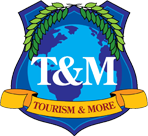Protecting Soft Targets
June 2013
With the onset of the summer travel season in much of the world June is a good time to ask ourselves how well we are protecting our tourism sites. Airlines and other forms of transportation have the advantage that they received government security. Most other forms of tourism, such as hotels, restaurants, shopping centers, and major attractions such as theme parks receive little or no government security or protection. In most cases, the tourism industry can depend on no one but itself.
Despite recent advances in security tourism centers, as seen by the tragedy of the Boston Marathon, and the killing of soldiers on the streets of London and Paris, often remain vulnerable to all forms of criminal and terrorism attacks. There are many reasons for this vulnerability. Tourism attracts large numbers of anonymous people, in most cases people come and go into and out of tourism centers at will, tourism security professionals must maintain a clear balance between good security practices that may be somewhat invasive and customer service and privacy. Tourism locales then are often what is classified as “soft targets”. A soft target is classically defined as an unarmed target that an enemy needs to destroy. In the case of tourism, these are places that can easily be attacked and represent a nation’s valuable economic and/or iconic assets. Because tourism and travel are to a great extent voluntary activities, the tourism and travel industry is very sensitive to soft-target threats. These threats are not only physical but also psychological. To help you deal with these issues, Tourism Tidbits presents the following ideas.
Know what you know and what you do not know. Perhaps the biggest mistake is a false sense of security. Never confuse good luck with good planning. The fact that nothing has happened in the past does not mean that nothing will occur in the future. Think of tourism security measures as a form of insurance. It is better to have them and never need them, then need them and not have them. Always go over all of your plans with a proven tourism security expert.
List the soft targets in your community or business. In tourism soft targets may be anything from a hospital to a movie theater, from a hotel to an attraction, from a transportation center to a public market. Knowing that these are soft targets does not mean panicking; it does mean having a plan and making sure that all those who might be needed know and understand the plan.
Work with your professionals to list all of your security challenges. Among these challenges are do your security agencies interconnect and work well together, how do you use limited manpower and resources, what rights do tourists and civilians have, how would an attack on a soft target impact your society and community’s daily life?
Know which are terrorism soft targets, which are crime soft targets and where these overlap. In some cases there is a clear distinction between criminal acts and terrorism, in other cases these two separate phenomena overlap or feed on each other. For example, some terrorist groups earn their money from illegal drugs. In that case, the purchasing of a substance such as marijuana is less innocent than the buyer may know. S/he may inadvertently be financing an act of terrorism. The key is to diagnose correctly. Poor diagnoses may lead to correct treatments of the wrong illness and therefore accomplish nothing.
The best crisis management is good risk management. Often threats are classified as acts of man and acts of God. In reality in most cases acts of God No builds hotels on seismic fault lines or along an unprotected shoreline may be taking undo risks. In protecting tourism center go beyond the basic goals of: (1) threat identification, (2) threat evaluation (3) developing a plan to deal with threat, deterring the treat, (5) recovering from a threat that has occurred (crisis management. It is always cheaper to stop a threat than it is to recover from a threat that has now been actualized. Be careful to keep careful records. Know that when a risk becomes reality that there is a good chance that your locale or businesses will be exposed to lawsuits. Review all liability issues with a lawyer or legal counsel prior to a crisis and know where you may be negligent. Then do everything possible to make sure that you handle these issues before they become a crisis.
Crate response teams that are multi-disciplinary. Tourism security is so complex that no one person knows everything. Teamwork is essential. Work with people from your community. Seek help in obtaining lists of physicians whom you can call upon, foreign language speakers, clergy and psychologists. Do not think of only traditional security experts such as first responders (medical, police, fire) but how you can involve everyone from the media to the local schools. Make sure that you involve not only people from the public sector but also the private sector.
Think about what is the correct balance for your community and/business between technology and human resources. Technology can be a great aid, but it cannot substitute, especially in a tourism crisis for the warmth and caring of a human being. On the other hand, humans tire out and most people can only handle X amount of stress before they begin to lose their professional attitudes. Both technology and human resources have their role. Work with your security professionals to develop the correct mixture for your locale.
Review your fundamentals on a regular basis. Soft targets such as tourism are not static but dynamic targets. That means that you must review your plans on a regular basis. What may have been valid a year ago, may not necessarily be correct the following year. Ask yourself what has changed in your community and the world during the past year? Do you need to do to strengthen or create new partnerships? Is your risk assessment still accurate? Will your mitigation efforts continue to work?



